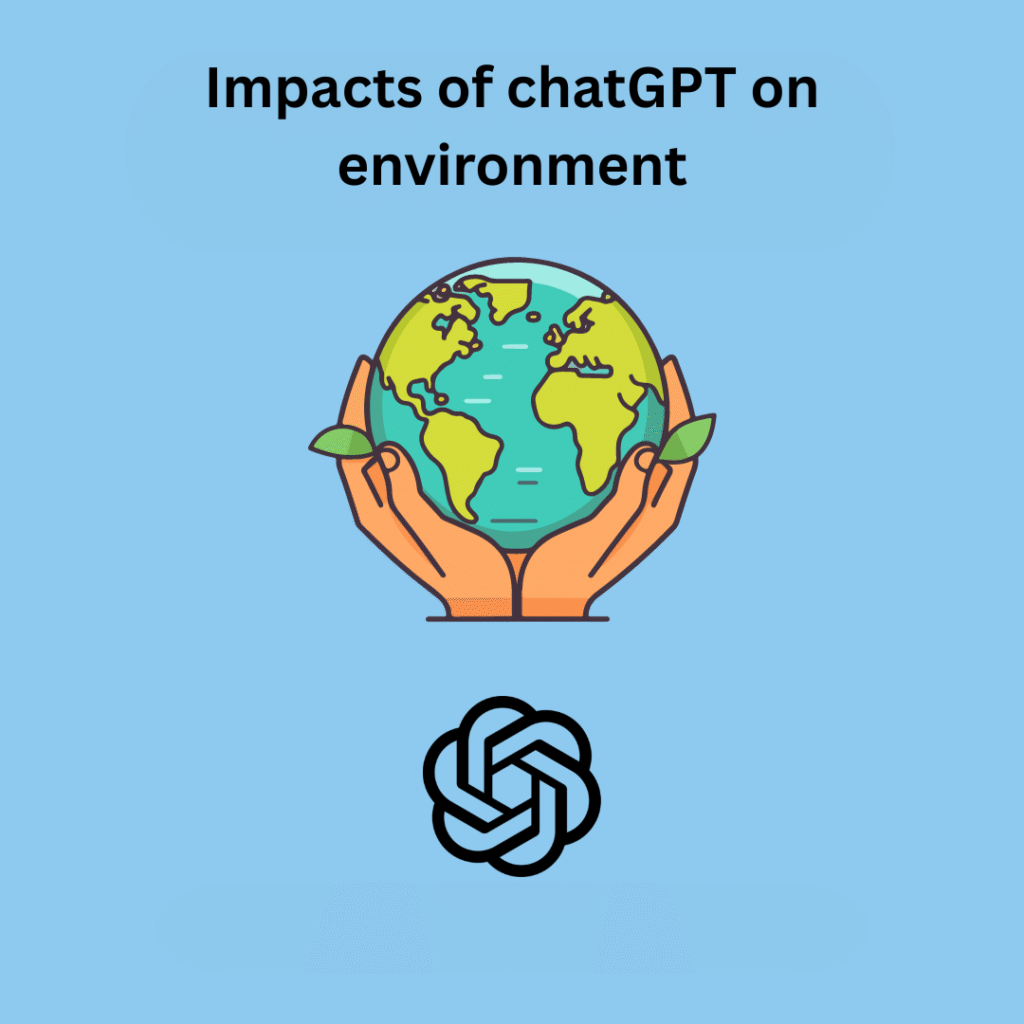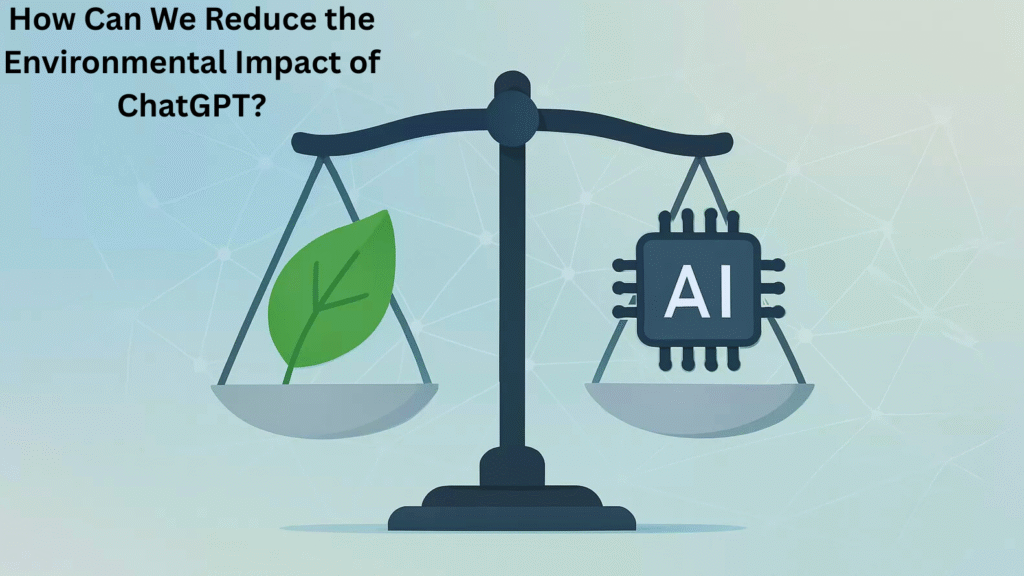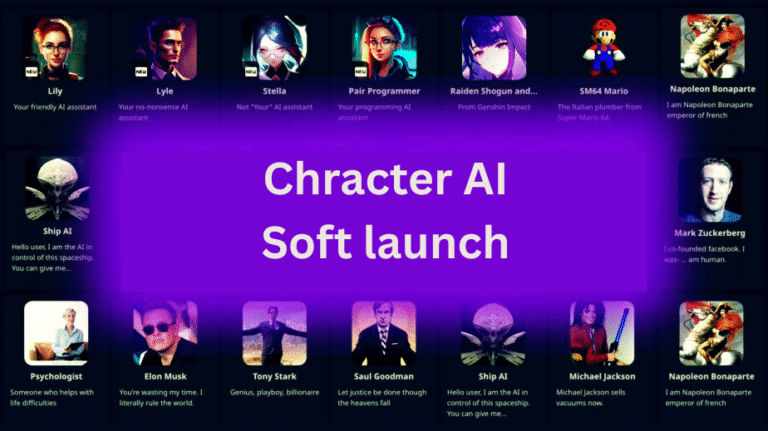Why Is ChatGPT Bad for the Environment
You are thinking sometime about this question your favorite chatbots involve harming the environment. As helpful as AI systems are in providing instant answers, the servers powering them consume vast amounts of energy, raising concerns about environmental impact and sustainability This article will shed light on the environmental footprint of ChatGPT and similar technologies.
What is ChatGPT?
ChatGPT is a type of artificial intelligence developed by OpenAI. It is designed to understand and generate human-like text based on the input it receives.
This means you can ask it questions, about anything seek advice, or even have a discussion, and it will also respond in batter way. ChatGPT is trained on many topics, allowing it to provide information and understanding on various subjects.
It works by guessing the next word in a sentence, which helps it create clear and relevant responses that sound natural. Many people use ChatGPT for many reasons, like learning new things, coming up with ideas, and solving problems in different areas.
One of its impotent benefits to provide more types of communication Whether you need something formal or casual, ChatGPT can adjust its tone to fit your needs.
Key Concepts of ChatGPT
1. Artificial Intelligence (AI)
ChatGPT is a type of artificial intelligence designed to understand and generate human-like text. It learns from vast amounts of data to respond accurately to various prompts.
2. Chatbot:
A chatbot is a type of software made to imitate natural conversations with people, especially online through websites, messaging apps, or other digital platforms.
3. Natural Language Processing (NLP)
This technology focuses on how computers understand and explain human language meaningfully. ChatGPT uses natural language processing (NLP) to create conversations that feel natural and smooth, closely imitating human interaction and making communication with machines more intuitive and engaging.
4. Machine Learning
ChatGPT is trained using machine learning techniques. This means it improves over time as it processes more information, becoming better at answering questions and engaging in dialogue. But some time ChatGPT also causing errors that create difficulty for users.
5. User Interaction
The system is built for easy interaction with the peoples. Users can type their questions or comments, and ChatGPT responds quickly, making communication smooth and efficient.
Why Is ChatGPT Bad for Environment
FOLLOWING ARE THE BAD IMPACT OF CHATGPT ON ENVIRONMENT;
1. Energy Use of AI Models
ChatGPT, like many AI models, requires a lot of energy to function. The servers that run these models consume vast amounts of electricity. This energy use contributes to higher carbon emissions, especially if the electricity comes from non-renewable sources.
The production and maintenance of data centers also have environmental impacts. These facilities need cooling systems to prevent overheating, which can use even more energy. As AI becomes more popular, the demand for these resources increases, putting extra strain on our planet.
2. Carbon Emissions from Energy Sources
A big worry is the carbon pollution from the energy used by data centers. These centers need a lot of electricity to run servers and cooling systems to stop overheating. This energy use is always high, making it a major challenge.
Most electricity now comes from fossil fuels like coal, oil, and natural gas. These fuels release a lot of carbon dioxide and other gases that harm the climate. As AI tools like ChatGPT become more popular, their growing energy needs increase pollution and environmental harm.
3. Using Resources
ChatGPT, similar to many other advanced artificial intelligence systems, requires a significant amount of energy to operate effectively. This energy is supplied by powerful computers and servers that depend on electricity to function properly. When these computers are running, they consume essential resources, including electrical power, which can contribute to environmental issues such as pollution and climate change over time.
4. E-Waste Issues
ChatGPT and similar AI models affect the environment because they need a lot of computing power. Training and using these models require big data centers with many servers that use a lot of electricity. This electricity often comes from non-renewable sources like coal or natural gas, which increases carbon emissions. Also, frequent hardware upgrades create a lot of electronic waste, adding to the e-waste problem.
5. Unequal Access to Technology
Another important issue is unequal access to technology. While advanced AI can boost progress in developed areas, many underserved communities do not have the needed infrastructure to use these technologies. This digital gap slows economic growth and causes unfair environmental impact, as poorer areas may depend on less efficient tools.
6. Water Usage
Data centers also require a significant amount of water to effectively cool their equipment and maintain optimal operating temperatures. In regions that are already experiencing water scarcity, this increased demand for water can place additional pressure on limited local resources. Such strain on water supplies can have far-reaching consequences, impacting not only nearby communities that depend on these resources for their daily needs but also the surrounding wildlife and natural ecosystems that depend on a stable water supply for survival.
7. Short Lifespan of Devices
The fast growth of artificial intelligence technology is making many electronic devices last for a shorter time. Because of this, people need to upgrade their devices more often, which causes more electronic waste around the world.
8. The Lifecycle of Electronics
From the mining of raw materials to manufacturing and eventual disposal, each step can harm our planet. Mining for metals needed in computer chips often leads to habitat destruction and pollution.
Once these devices are made, they consume a lot of energy while running. Data centers, where AI models like ChatGPT operate, require large amounts of electricity, contributing to carbon emissions if the energy comes from fossil fuels.
Additionally, when electronic devices reach the end of their life, they can become e-waste. Improper disposal can release toxic substances into the environment.
9. Increased Demand for Electricity
As more people use AI services like ChatGPT, the demand for electricity grows quickly. This rise in energy use can increase carbon emissions, especially if the extra power comes from fossil fuels. Because of this, the environmental impact of growing AI use is an important concern due to its effect on climate change and pollution.
10. Environmental Justice
Environmental justice means treating everyone fairly in environmental decisions, no matter their background. Using AI without thinking about its effect on the environment can hurt vulnerable groups already dealing with climate change and resource loss.

How Can We Reduce the Environmental Impact of ChatGPT?
1. Impact Estimation:
One important area to focus on is impact estimation. This means understanding how much energy is used when running AI models like ChatGPT. By measuring this energy use, we can find ways to reduce waste.
2. Select Only the Needed Information:
we can select only the information we needed when using the model. This means asking specific questions and avoiding unnecessary queries, which can save computing power and energy.
3. Invest in Green Energy:
One way to reduce ChatGPT’s impact on the environment is to use green energy. This means running data centers with renewable power like wind, solar, or water energy. Using clean energy helps cut down harmful carbon emissions.
4. Compressing Large Models:
A large AI system can be shrunk during processing to fit its big database into a smaller, faster model. This shrinking lets the AI use much less power while keeping the main functions and performance of the original big system.

CONCLUSION
ChatGPT offers many benefits in terms of convenience and information, it also has a significant environmental impact that we cannot ignore. The energy consumption required to power the servers and data centers that run these AI models contributes to carbon emissions and global warming. Additionally, the production of electronic devices used to access these technologies can lead to increased waste and pollution. It’s important for us to be aware of these consequences as we embrace new technologies.
FAQs
1. How does ChatGPT impact energy consumption?
ChatGPT uses a lot of computer power, which means it consumes a lot of energy. This energy often comes from fossil fuels, leading to higher carbon emissions.
2. What are carbon emissions?
Carbon emissions are gases released into the air when we burn fossil fuels. These gases contribute to climate change and can harm the environment.
3. Does using ChatGPT contribute to climate change?
Yes, because the energy used to run ChatGPT can come from sources that pollute the air. This pollution can worsen climate change.
4. Are there any alternatives to ChatGPT that are better for the environment?
Some AI models are designed to be more energy efficient. Using these alternatives can help reduce environmental impact.
5. Can ChatGPT’s energy use be reduced?
Yes, improvements in technology and using renewable energy sources can lower the energy needed for ChatGPT, making it more eco-friendly.






